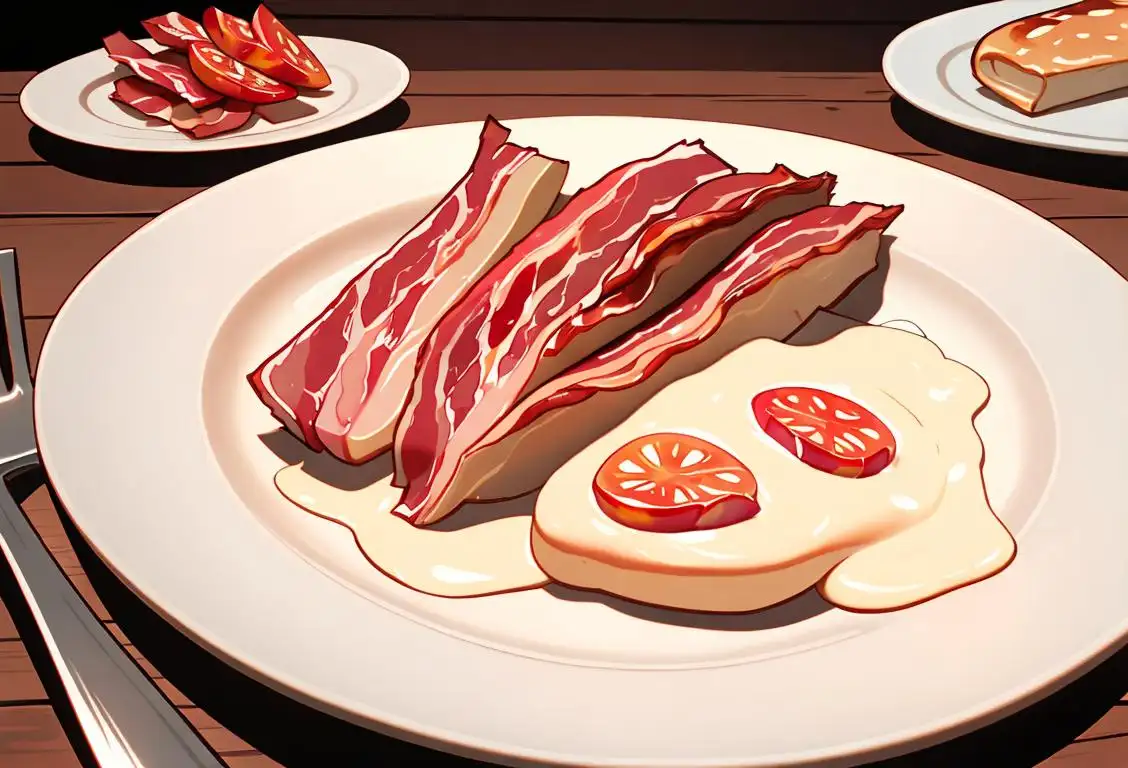National Hopia Day

Welcome to National Hopia Day, a delightful celebration of a beloved Filipino treat! Get ready to hop on the hopia train and indulge in the scrumptiousness that awaits you. Let's dive right in and explore the fascinating history and mouthwatering flavors of this special day.
When is Hopia Day?
It's national hopia day on the 29th August.
A Brief History of National Hopia Day
National Hopia Day is a relatively new addition to the world of national days, but its popularity and significance cannot be underestimated. The origins of this delectable celebration can be traced back to the bustling foodie culture of the Philippines.
While the exact date is uncertain, based on our online data, it seems that the biggest buzz around National Hopia Day occurred on August 29, 2015. This is the day when social media was flooded with tantalizing pictures and heartfelt declarations of love for this beloved pastry.
The Sweet Sensation of Hopia
Hopia is a traditional Filipino pastry that has stolen the hearts and taste buds of people across the globe. It is a delicious treat made with a flaky crust and filled with various sweet and savory fillings.
The most popular fillings include mung bean, wintermelon, and even purple yam. These fillings are carefully encased in a delicate pastry wrapper, creating a delightful combination of textures and flavors.
Join the Celebration!
If you're eager to partake in the festivities of National Hopia Day, there are a few ways you can join the celebration. Firstly, you could make your own hopia from scratch using traditional recipes, or if you're feeling lazy (no judgment here), you can simply head to your local Filipino bakery and grab a box of these heavenly treats.
Share your hopia creations or your favorite hopia memories on social media using the hashtag #NationalHopiaDay. You'll be joining a community of hopia lovers who can't wait to drool over your mouthwatering photos.
So, mark your calendars for National Hopia Day and get ready to treat yourself to a little slice of Filipino culinary heaven!
History behind the term 'Hopia'
Early 17th century
Macao's Sweet Treasure
During the early 17th century, the small island of Macao became a bustling trading port in Southern China. It was here that the term 'hopia' first emerged. Derived from the Hokkien dialect, hopia referred to a delicious and flaky pastry filled with various sweet or savory fillings. The term gained popularity among both the locals and sailors, who were eager to sample the island's culinary delights.
Late 17th century
Bringing Hopia to the Philippines
In the late 17th century, Filipino-Chinese immigrants began bringing hopia to the Philippines, where it quickly became a beloved treat among locals. The sweet pastry's popularity soared, and it became a staple in Filipino-Chinese households. The term 'hopia' also became widely known and embraced by Filipinos, etching its place in the country's culinary lexicon.
20th century
Hopia: A Symbol of Filipino-Chinese Fusion
Throughout the 20th century, hopia became deeply ingrained in Filipino cuisine and culture. It became a symbol of the harmonious fusion between Filipino and Chinese culinary traditions. The term 'hopia' was not only associated with the pastry itself but also represented the blending of flavors and cultural heritage. Today, hopia remains a popular dessert in the Philippines, enjoyed by people of various backgrounds.
Present
Hopia: A Taste of Tradition
In the present day, hopia continues to be a beloved Filipino pastry. It is commonly found in various flavors such as mung bean, pineapple, pandan, and ube. Whether enjoyed as a snack, dessert, or gift, hopia serves as a delicious reminder of the rich history and cultural exchange that has shaped Filipino cuisine.
Did you know?
Did you know that the word 'hopia' is said to have originated from Hokkien, a Chinese dialect? The name perfectly reflects the Chinese influence on Filipino cuisine, making hopia a delightful fusion of cultures.Tagged
awareness food funFirst identified
12th August 2015Most mentioned on
29th August 2015Total mentions
577Other days
Sweet Tea Day
Agriculture Day
Cheese Pizza Day
Bacon Day
Pumpkin Day
Medal Of Honor Day
Vodka Day
Foundation Day
Guac Day
Wing Day









